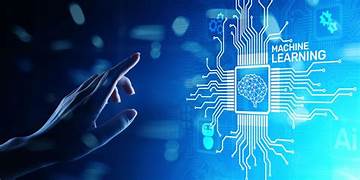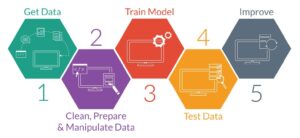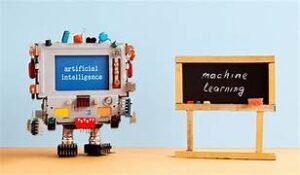Machine learning has rapidly become one of the most exciting and influential fields in the realm of technology. From personalized recommendations on streaming platforms to autonomous vehicles and advanced healthcare diagnostics, machine learning is transforming industries and unlocking new possibilities. If you’re new to the world of machine learning, this beginner’s guide will help you understand the basics, appreciate its power, and explore the incredible potential it holds.
What is Machine Learning?
At its core, machine learning is a branch of artificial intelligence (AI) that focuses on developing algorithms and models that allow computers to learn from data and make predictions or decisions without explicit programming. Instead of being explicitly programmed, machine learning algorithms learn from patterns and relationships within data, enabling them to improve their performance over time.
Key Concepts in Machine Learning
To understand machine learning, it’s important to familiarize yourself with some key concepts:
- Training Data: Machine learning models require data to learn from. This data is referred to as training data and is used to train the model to make accurate predictions or decisions.
- Features: Features are the individual measurable properties or characteristics of the data. For example, in a housing price prediction model, features could include the number of bedrooms, square footage, and location of a house.
- Labels: Labels are the desired outputs or outcomes associated with the data. In the housing price prediction example, the label would be the actual price of the house.
- Supervised Learning: Supervised learning is a type of machine learning where the model is trained on labeled data. It learns to map input features to their corresponding labels, enabling it to make predictions on new, unseen data.
- Unsupervised Learning: Unsupervised learning involves training a model on unlabeled data. The model identifies patterns and structures within the data without specific labels, enabling it to uncover hidden insights.
- Validation and Testing: After training a model, it needs to be evaluated to ensure its performance. Validation and testing involve using separate datasets to assess how well the model generalizes to new, unseen data.
Applications of Machine Learning
Machine learning has found applications across various industries. Here are a few notable examples:
- Recommendation Systems: Companies like Netflix and Amazon use machine learning to provide personalized recommendations based on user preferences and behavior.
- Natural Language Processing (NLP): NLP algorithms enable machines to understand and interpret human language. This has applications in virtual assistants, chatbots, and sentiment analysis.
- Image and Object Recognition: Machine learning models can be trained to recognize objects, faces, and patterns within images. This has applications in areas such as self-driving cars and medical imaging.
- Fraud Detection: Machine learning algorithms can identify patterns of fraudulent behavior in financial transactions, helping to detect and prevent fraud.
- Healthcare: Machine learning is transforming healthcare by aiding in disease diagnosis, drug discovery, personalized treatment plans, and predicting patient outcomes.
Getting Started with Machine Learning
If you’re eager to dive into machine learning, here are some steps to help you get started:
- Learn the Basics: Begin by understanding the fundamental concepts and principles of machine learning. Online tutorials, courses, and textbooks can provide a solid foundation.
- Choose a Programming Language: Popular languages for machine learning include Python and R. Pick one and familiarize yourself with its syntax and libraries.
- Explore Machine Learning Libraries: Libraries like scikit-learn and TensorFlow offer pre-built functions and tools for machine learning. Experiment with these libraries to implement machine learning algorithms.
- Practice with Datasets: Work with publicly available datasets or datasets specific to your area of interest. Explore the data, preprocess it if necessary, and use it to train and test your models.
- Join Online Communities: Engage with the machine learning community through forums, discussion boards, and social media platforms. Collaborating and learning from others can greatly enhance your understanding and skills.
- Keep Learning: Machine learning is a rapidly evolving field. Stay updated with the latest research, techniques, and advancements to continue growing your knowledge and expertise.
The Power of Machine Learning Awaits
Machine learning has the potential to revolutionize industries, drive innovation, and unlock new possibilities. As a beginner, understanding the basics and exploring its applications will empower you to embark on an exciting journey of discovery and problem-solving.
Embrace the power of machine learning, foster a curious mindset, and unleash your creativity to make meaningful contributions to this transformative field.





